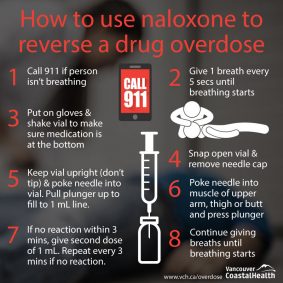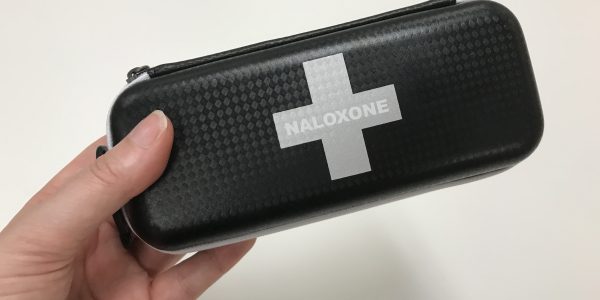Overdose Awareness Day – this Thursday
A silver ribbon or pin is the symbol of Overdose Awareness Day. Wearing a silver ribbon or pin commemorates those who have been lost or injured as a result of an overdose. It also acknowledges the grief felt by family, friends, and peers. Visit your closest VCH Harm Reduction or Take Home Naloxone sites to request a pin to wear or distribute on August 31st, 2017.
Learn more about the issue
- In 2016, over 967 deaths in BC were due to illicit drug overdoses, the majority include opioids.
- Opioids such as Heroin, Oxycodone, Fentanyl, Morphine and Methadone suppress breathing, and in cases of overdose, can result in brain damage and even death.
- Overdose can occur in individuals taking either prescription or illicit substances
- There were 129 suspected drug overdose deaths in May 2017. This is a 158% increase over the number of deaths occurring in May 2016
- Visit vch.ca/overdose for more information
Learn more about Naloxone
Unintentional deaths from opioid overdose are preventable. Naloxone is an antidote to an opioid overdose and is a safe medication. It is injected by a friend, family member, peer or health professional to reverse the effects of opioids on the body. In the event of an overdose, Naloxone restores normal breathing within 2-5 minutes of administration, but wears off in 30-90 minutes. Naloxone cannot be abused, as it has no effect on the body in the absence of opioids.
Take Home Naloxone
Take Home Naloxone (THN) programs provide Naloxone to people who use prescription or illicit opioids, as well as those people who are at higher risk of witnessing/responding to an opioid overdose. It is not intended to replace emergency care or minimize the importance of calling 911. But because 85% of overdoses happen within the company of others, having Naloxone offers the opportunity to save a life and reduce harms related to the overdose while waiting for the emergency services to arrive.
Check out our handy how to use naloxone infographic: 
Current Vancouver Coastal Health initiatives involving Overdose Prevention include:
- Increasing the number of Take-Home Naloxone kits throughout the community. There are currently a total of 109+ sites people can access across VCH/PHC.
- In Vancouver alone there are four Overdose Prevention sites and two Supervised Consumption services (Insite and the Powell Street Getaway, which just opened July 28th 2017). There have been no deaths at the Supervised Injection or Overdose Prevention sites.
- The Real-time Drug Alert & Response (RADAR) project is starting to test several methods of reporting, including an online web form (at vch.ca/overdose) and a texting service at (236) 999-DOPE (3673). In both methods, people can report information such as the date of the overdose, what town and neighbourhood the substance was purchased in, types of substances thought to be used, and the physical description of the substances. In the web form, participants can also upload a photo of the drug and/or its packaging. Participants do not have to provide their names. Both methods are up and running currently and anyone can use them – including service providers, and people who use substances.
- Anonymous Fentanyl Urine Drug Screening (FUDS) which is offered to improve awareness of Fentanyl exposure by offering Fentanyl urine dip screening and concurrently encouraging adoption of harm reduction services
See TowardTheHeart.com/naloxone for more information, and about becoming a Take Home Naloxone distribution site. Find a nearby naloxone site at TowardTheHeart.com/site-locator

